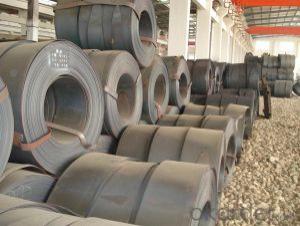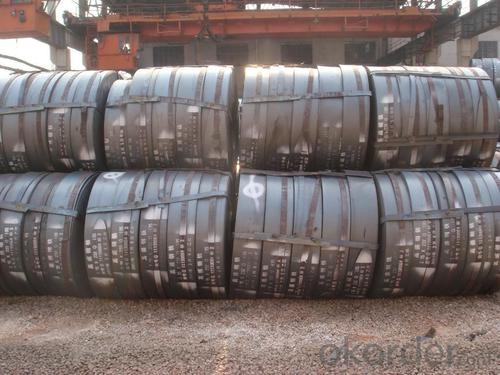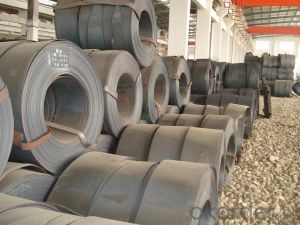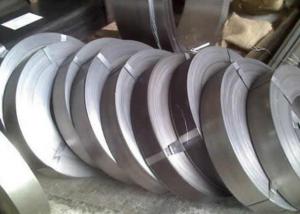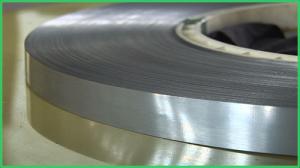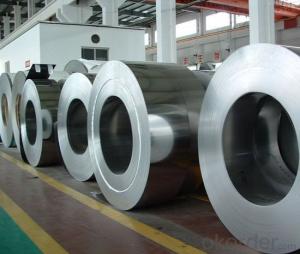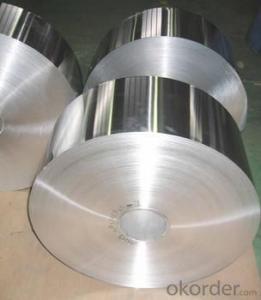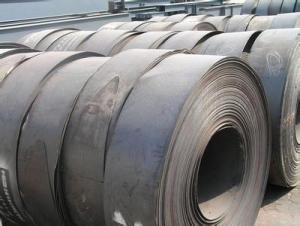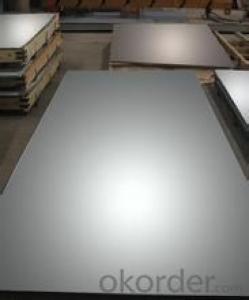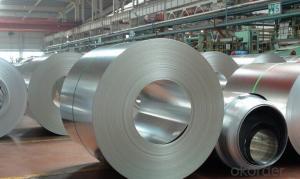Hot Rolled Steel Strip for Spring in Car
- Loading Port:
- Qingdao
- Payment Terms:
- TT OR LC
- Min Order Qty:
- 500 m.t.
- Supply Capability:
- 10000 m.t./month
OKorder Service Pledge
OKorder Financial Service
You Might Also Like
Specification
1. Product Description
The Billets as raw materials, through furnace heating, high-pressure water to reduce the phosphorus, then entering the roughing mill, cutting head, end, and then put into the finishing mill, cutting the edge, after the times of straightening, leveling and other finishing line treatment, and then cutting board or coil becomes the hot rolled steel sheet and hot rolled steel coil.
2. Main Features
Characteristics of hot rolled steel hot-rolled steel is a high temperature heating and rolled steel, hot rolled product has high strength, good toughness, easy to processing molding and good weldability and other excellent properties, which are widely used in ship, automobile, Bridges, buildings, machinery, pressure vessels and other manufacturing industries.
3. Excellent Product Image
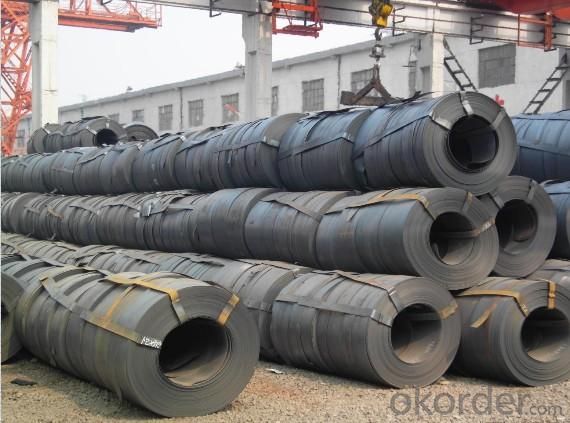
4. Application
Our hot-rolled steel coil and sheet are applied to a wide range of uses such as automobile, electrical appliance, machinery manufacturing, container manufacturing, shipbuilding, bridge, pipeline, and receive high acclaim from our customers for its excellent quality.
5. FAQ
1.Q: Do you have attended any exhibition?
A: We almost go to Canton Fair and Overseas Exhibitions every year.
2. Q: How to guarantee the quality of the products?
A: We have established the international advanced quality management system,every link from raw material to final product we have strict quality test;We resolutely put an end to unqualified products flowing into the market. At the same time, we will provide necessary follow-up service assurance.
3. Q: How long can we receive the product after purchase?
A: Usually within thirty working days after receiving buyer’s advance payment or LC. We will arrange the factory manufacturing as soon as possible. The cargo readiness usually takes 15-25 days, but the shipment will depend on the vessel situation.
Why choose us?
Pre-sale Service
1. Sample can be offered with sample charge and courier fee by buyer's side.
2. We have full stock,and can deliver within short time.Many styles for your choices.
3. OEM and ODM order are accepted, Any kind of logo printing or design are available.
4. Good Quality + Factory Price + Quick Response + Reliable Service, is what we are trying best to offer you
5. All of our products are produce by our professional workman and we have our high-work-effect foreign trust-worthy sales team.
6. We have 18 years' experience of design, manufacture and sell lingerie, we cherish every order from our honor.
After you choose
1. Count the most efficient shipping cost and make invoice to you at once.
2. Check quality again, then send out to you at 1-2 working day after your payment.
3. Email you the tracking no, and help to chase the parcels until it arrive you.
- Q: Can steel strips be used in electrical or electronic applications?
- Yes, steel strips can be used in electrical or electronic applications, particularly for grounding purposes or as a structural component in certain devices or equipment. However, their usage is limited compared to other materials like copper or aluminum, which are more commonly used for conducting electricity due to their superior electrical conductivity.
- Q: How are steel strips hardened for enhanced strength?
- Heat treatment is a process that can enhance the strength of steel strips by hardening them. It involves subjecting the strips to extreme temperatures and then rapidly cooling them. There are two main methods for hardening steel strips: quenching and tempering. During quenching, the first step of the heat treatment process, the steel strips are heated to a high temperature and then quickly cooled by immersing them in a quenching medium like oil or water. This rapid cooling causes a phase transformation in the steel, resulting in a hardened structure. The speed of the cooling process determines the level of hardness achieved, with faster cooling leading to greater hardness. Quenching also helps create a fine-grained microstructure, further enhancing the strength of the steel strips. However, steel strips hardened through quenching can become extremely brittle and prone to cracking. To overcome this, tempering is performed. Tempering involves reheating the hardened steel strips to a lower temperature, typically below the critical temperature, and then slowly cooling them. This process relieves internal stresses in the steel and increases its toughness and ductility, while maintaining a certain level of hardness. By combining quenching and tempering, it is possible to achieve the desired strength and hardness in steel strips while retaining some degree of toughness. This process is widely used in various industries, such as automotive, construction, and manufacturing, where high-strength steel is needed for applications like springs, blades, or structural components.
- Q: Can the tension leveller eliminate the wave shape of strip steel completely?
- Reflecting the shape of the board, the wave height is reduced or the wavelength is lengthened. That is, the tension straightener can only reduce the wave and improve the shape of the plate, but can not fundamentally eliminate the wave, and get an ideal smooth strip steel. There is an old saying called "correction must be positive". That is to completely eliminate the wave must be of short fiber than long fiber tension and bending is greater, elastic and plastic deformation of the original long fiber length is greater than a certain amount, resulting in the removal of external force, elastic recovery, length of fiber length, so as to obtain the shape completely flat the. However, in the current conditions of the straightening machine equipment, do not have such a function.
- Q: Can steel strips be formed into complex shapes?
- Yes, steel strips can be formed into complex shapes through various processes such as bending, rolling, stamping, and forming. Steel is a versatile material that can be manipulated to take on different shapes and sizes based on the requirements of a specific application. By using specialized tools and machinery, steel strips can be bent, curved, twisted, and shaped into intricate and complex designs. These formed steel strips are widely used in industries like automotive, aerospace, construction, and manufacturing, where complex shapes are often needed for various components and structures. The ability of steel strips to be formed into complex shapes makes them a valuable resource in modern engineering and design.
- Q: How are steel strips used in the manufacturing of bridges?
- Steel strips are a crucial component in the manufacturing of bridges as they provide strength, durability, and flexibility to the structure. These strips are typically used in the construction of bridge girders, which are the main load-bearing elements of a bridge. Steel strips are first cut and shaped into the desired length and width, and then welded or bolted together to form the bridge girders. These girders are responsible for carrying the weight of the bridge, including the vehicles and pedestrians that cross it. The use of steel strips allows for the construction of long and continuous girders, which helps to reduce the number of joints and connections in the bridge. This not only enhances the structural integrity and stability of the bridge but also minimizes the maintenance requirements. Additionally, steel strips are often coated with protective materials to prevent corrosion and increase their lifespan. These coatings can include galvanization or the application of epoxy paints, which provide a barrier against moisture, chemicals, and other environmental factors that can cause deterioration. Moreover, steel strips are highly versatile and can be fabricated into various shapes and sizes to suit the specific design requirements of different types of bridges, such as beam bridges, arch bridges, or suspension bridges. They can be used to create curved or straight girders, depending on the bridge's design and load-bearing capacity. In summary, steel strips play a vital role in the manufacturing of bridges by providing strength, durability, and flexibility to the structure. They are used to construct bridge girders, which carry the weight of the bridge and its users. The use of steel strips allows for long and continuous girders, reduces maintenance requirements, and provides design versatility.
- Q: What are the main factors affecting the magnetic properties of steel strips?
- The main factors affecting the magnetic properties of steel strips are the composition of the steel, the processing techniques used during manufacturing, the presence of impurities or defects in the material, and the application of external magnetic fields.
- Q: What are the common alloying elements used in steel strips?
- The common alloying elements used in steel strips are carbon, manganese, silicon, and sometimes small amounts of other elements such as chromium, nickel, and vanadium. Carbon is the most important alloying element as it enhances the strength and hardness of the steel. Manganese is added to improve the toughness and hardenability of the steel, while silicon helps in deoxidizing the molten steel and enhances its strength. Chromium and nickel are often added to increase the corrosion resistance and improve the overall mechanical properties of the steel. Vanadium is sometimes used to improve strength and wear resistance. The specific combination and proportion of these alloying elements depend on the desired properties of the steel strip and its intended application.
- Q: Can steel strips be used in architectural applications?
- Certainly, steel strips are an excellent choice for architectural applications. With its versatility and durability, steel can be transformed into various shapes, including strips, enabling it to be utilized in a diverse range of architectural functions. These steel strips can be employed for cladding, roofing, and siding purposes, providing both structural stability and enhancing the visual allure of a building. Moreover, due to their sleek and contemporary look, steel strips are frequently utilized for decorative intentions, such as producing feature walls or accents. In conclusion, architects and designers can rely on steel strips as a flexible and dependable option when integrating metal components into their architectural ventures.
- Q: How are steel strips used in the production of metal brackets?
- Due to their versatility and durability, steel strips find common use in the production of metal brackets. These strips are typically crafted from high-quality steel, which imparts the necessary strength and stability that brackets require. During the manufacturing process, steel strips are initially cut to the desired length and width, based on the specifications of the bracket being produced. This allows for greater adaptability in creating brackets of varied sizes and shapes. Once cut, the steel strips undergo a series of forming operations, such as bending, stamping, or rolling, to shape them into the desired bracket design. The choice of machinery and techniques for these forming operations depends on the complexity of the bracket. Steel strips also play a vital role in ensuring the structural integrity of the brackets. They provide a robust foundation and support, enabling the brackets to withstand heavy loads and maintain their shape under pressure. This is particularly crucial in applications where the brackets are utilized to support heavy objects or machinery. Furthermore, steel strips are often coated or treated to enhance their resistance to corrosion. This is of utmost importance in applications where brackets may be exposed to harsh environments or corrosive substances, as it aids in prolonging their lifespan and preserving their functionality. In conclusion, steel strips are an indispensable component in the production of metal brackets, offering the strength, flexibility, and durability necessary for a wide range of applications.
- Q: What are the common applications of hot-rolled steel strips?
- Hot-rolled steel strips are commonly used in a variety of applications such as construction, automotive manufacturing, appliances, machinery, and metal fabrication. They are often used for structural components, including beams, columns, and supports, due to their high strength and durability. Additionally, hot-rolled steel strips are used in the production of car bodies, chassis parts, and engine components in the automotive industry. They are also utilized in the manufacturing of household appliances, such as refrigerators, ovens, and washing machines. Furthermore, hot-rolled steel strips are commonly employed in the fabrication of machinery and equipment, as well as for general metalworking purposes.
Send your message to us
Hot Rolled Steel Strip for Spring in Car
- Loading Port:
- Qingdao
- Payment Terms:
- TT OR LC
- Min Order Qty:
- 500 m.t.
- Supply Capability:
- 10000 m.t./month
OKorder Service Pledge
OKorder Financial Service
Similar products
Hot products
Hot Searches
Related keywords

